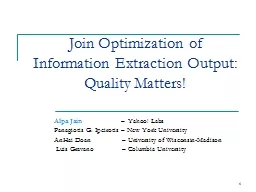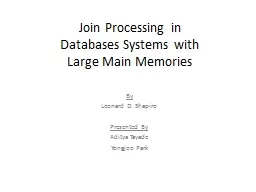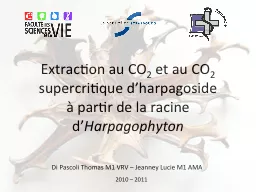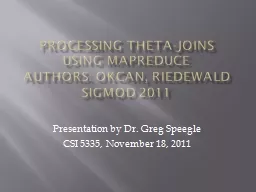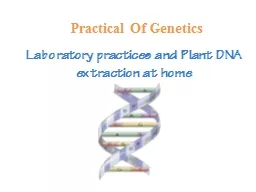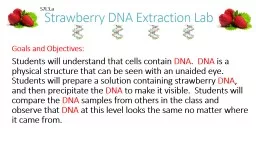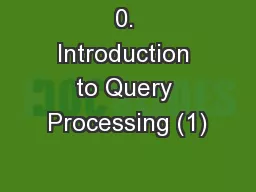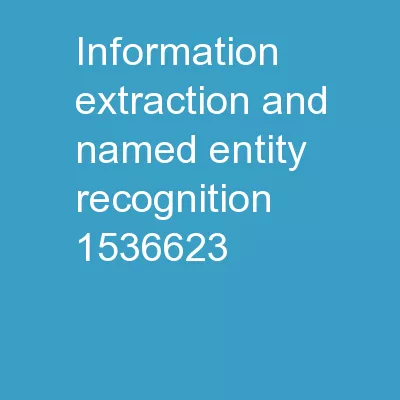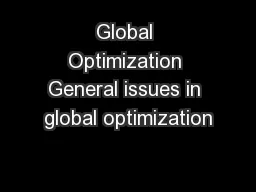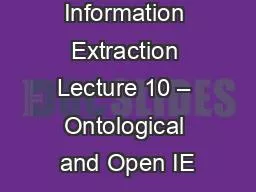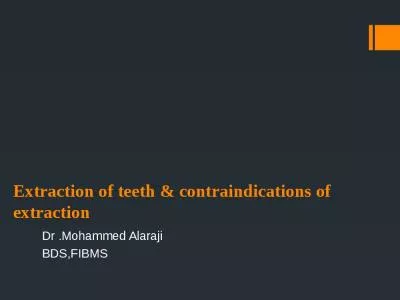PPT-1 Join Optimization of Information Extraction Output:
Author : celsa-spraggs | Published Date : 2018-02-22
Quality Matters Alpa Jain Yahoo Labs Panagiotis G Ipeirotis New York University AnHai Doan University of WisconsinMadison Luis Gravano Columbia University
Presentation Embed Code
Download Presentation
Download Presentation The PPT/PDF document "1 Join Optimization of Information Extr..." is the property of its rightful owner. Permission is granted to download and print the materials on this website for personal, non-commercial use only, and to display it on your personal computer provided you do not modify the materials and that you retain all copyright notices contained in the materials. By downloading content from our website, you accept the terms of this agreement.
1 Join Optimization of Information Extraction Output:: Transcript
Download Rules Of Document
"1 Join Optimization of Information Extraction Output:"The content belongs to its owner. You may download and print it for personal use, without modification, and keep all copyright notices. By downloading, you agree to these terms.
Related Documents

